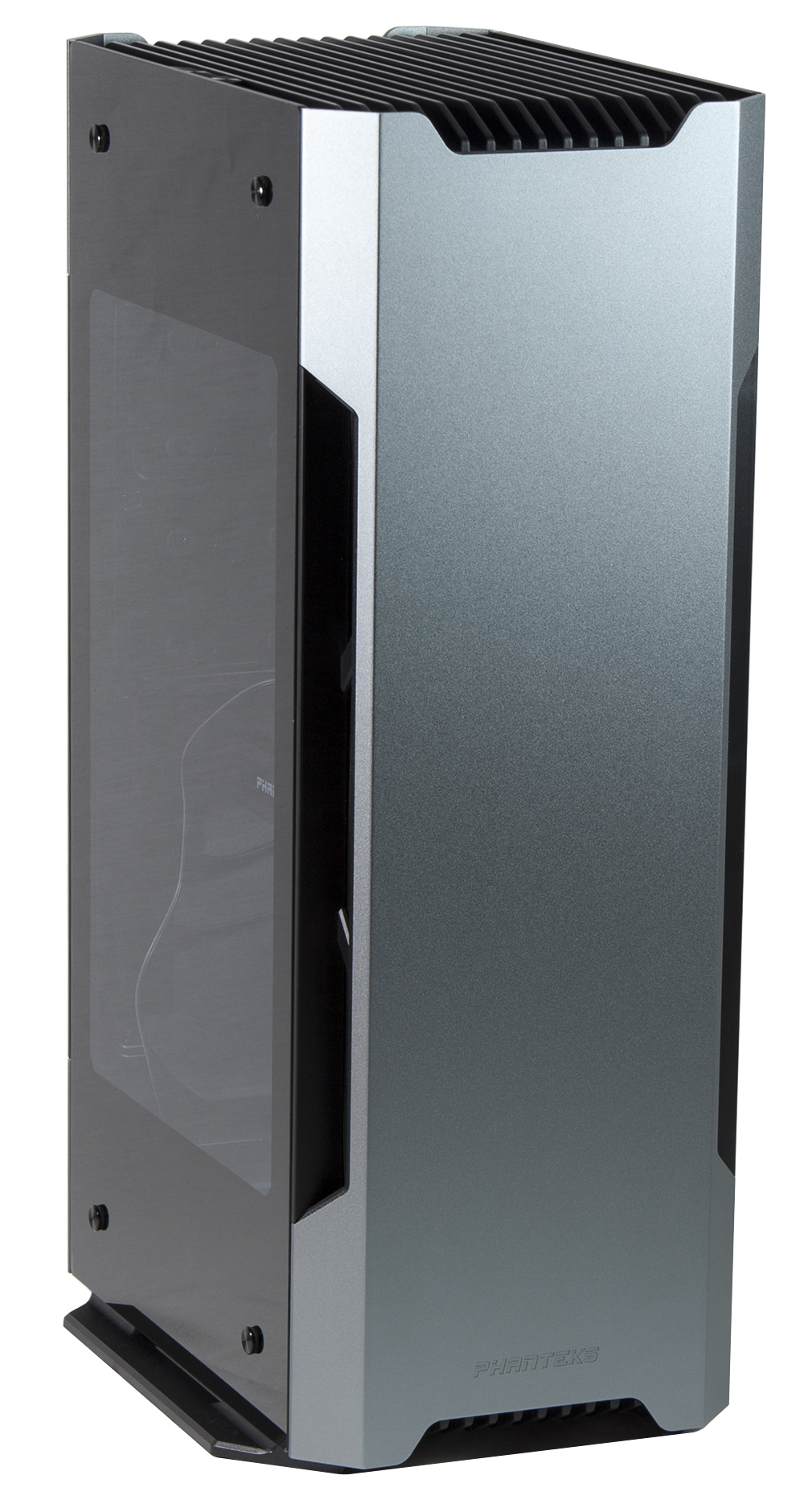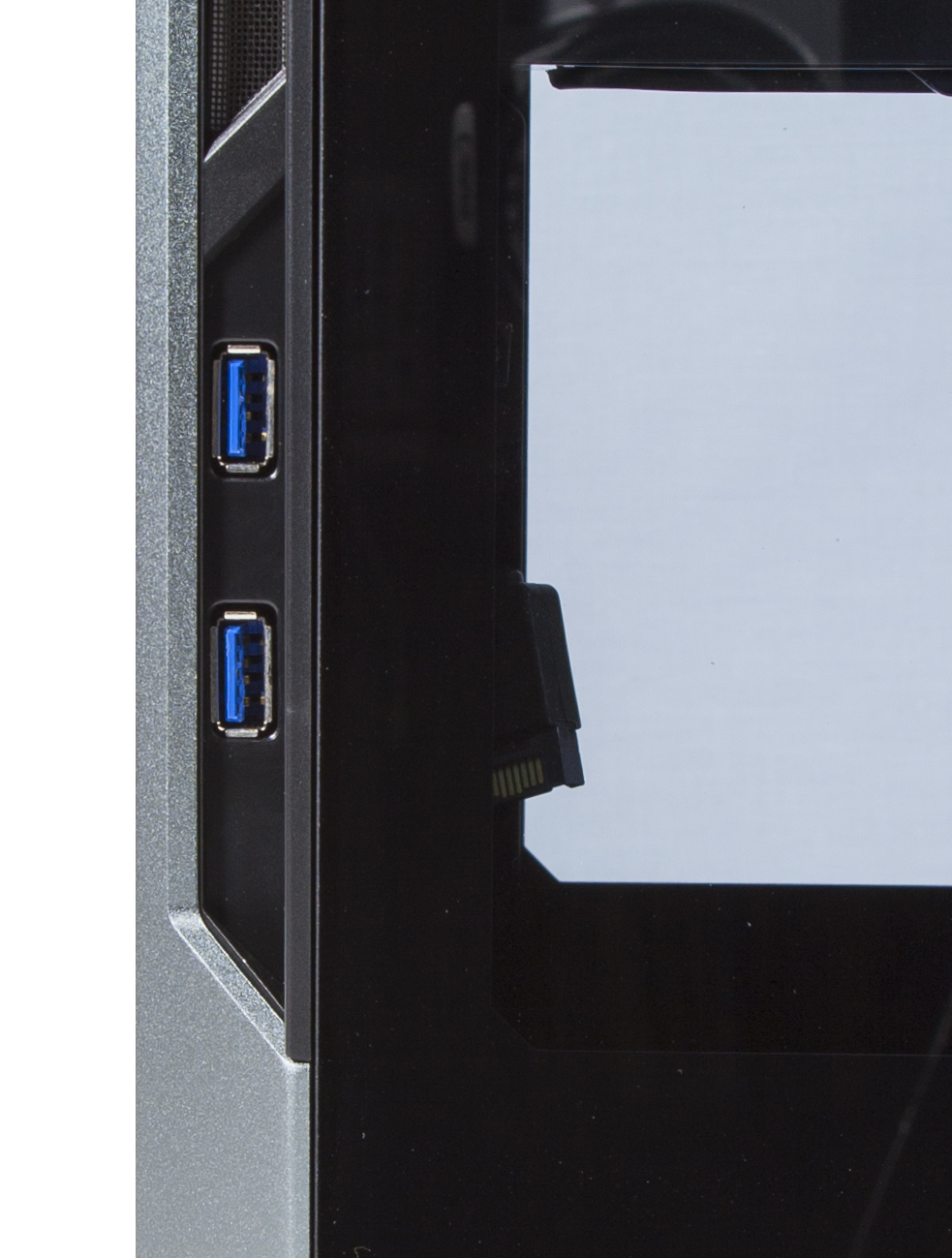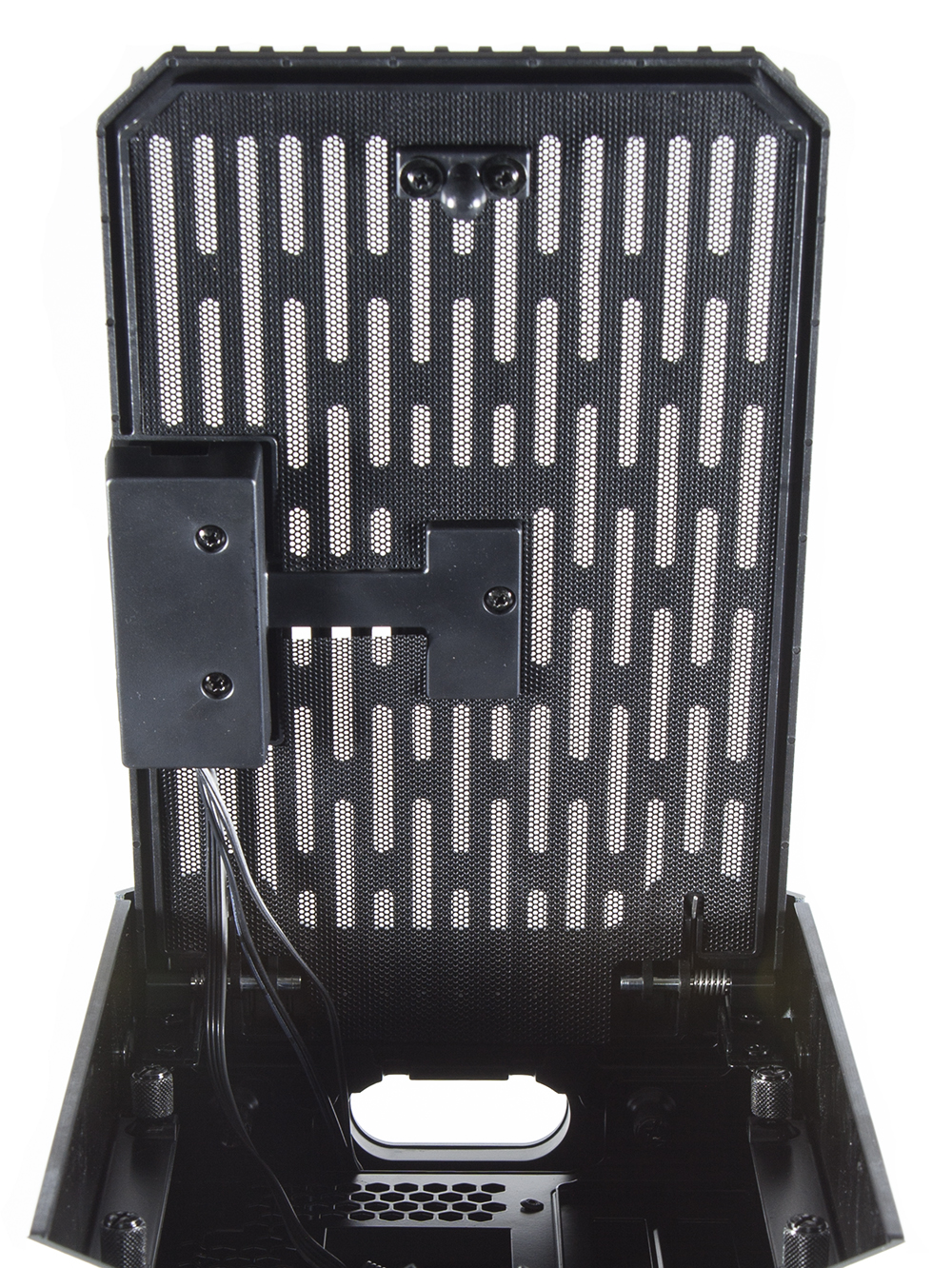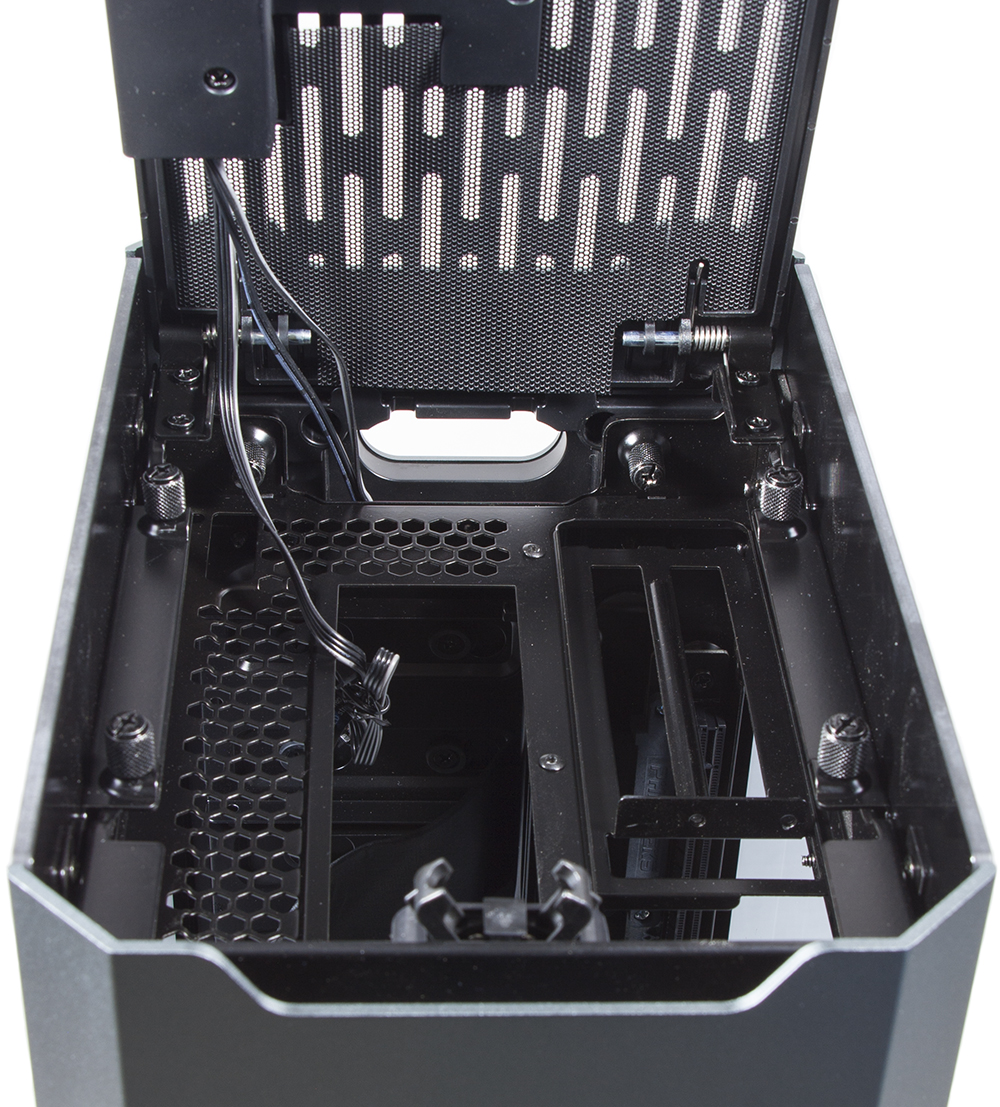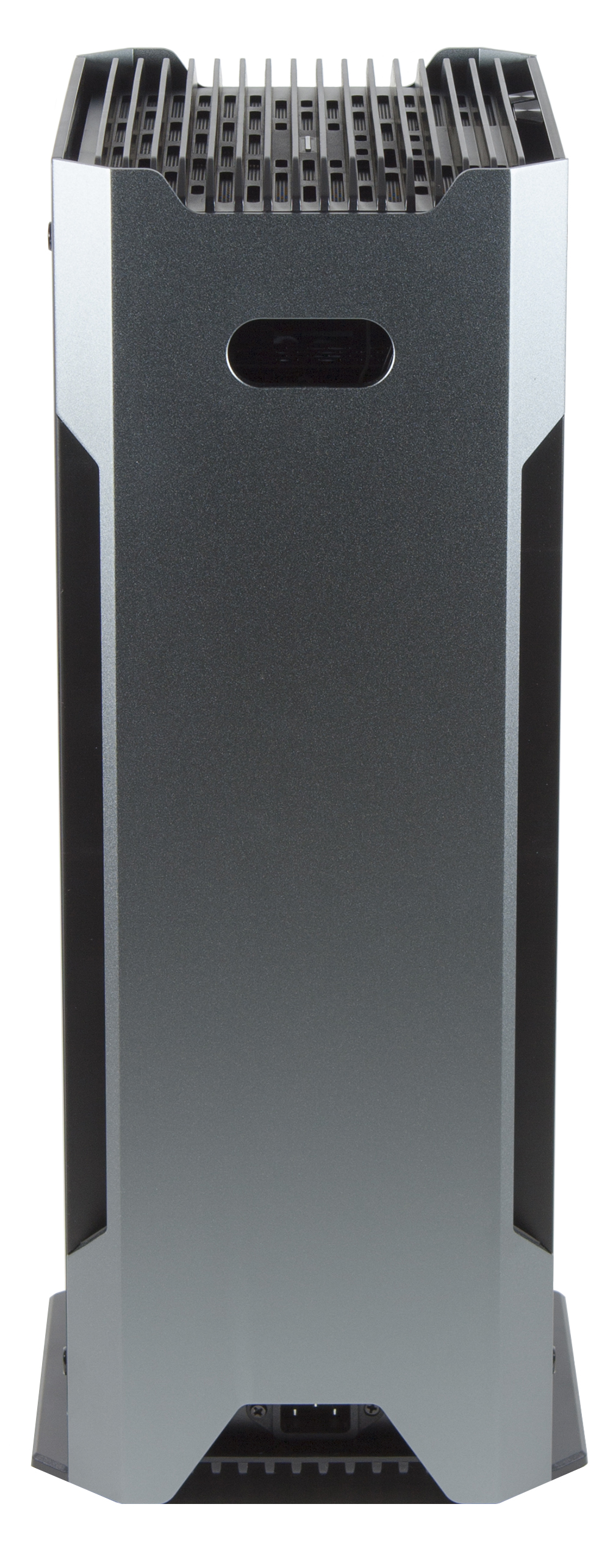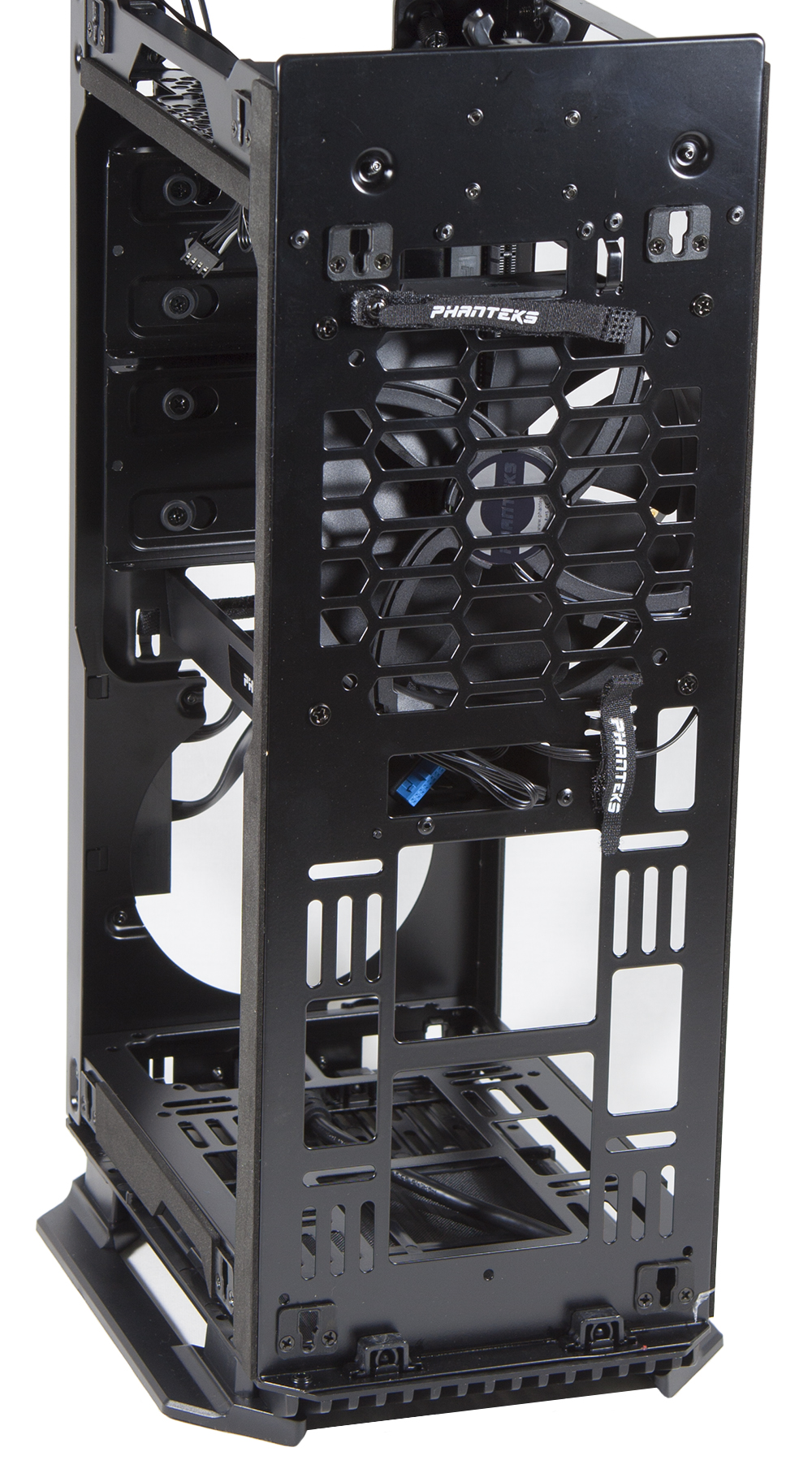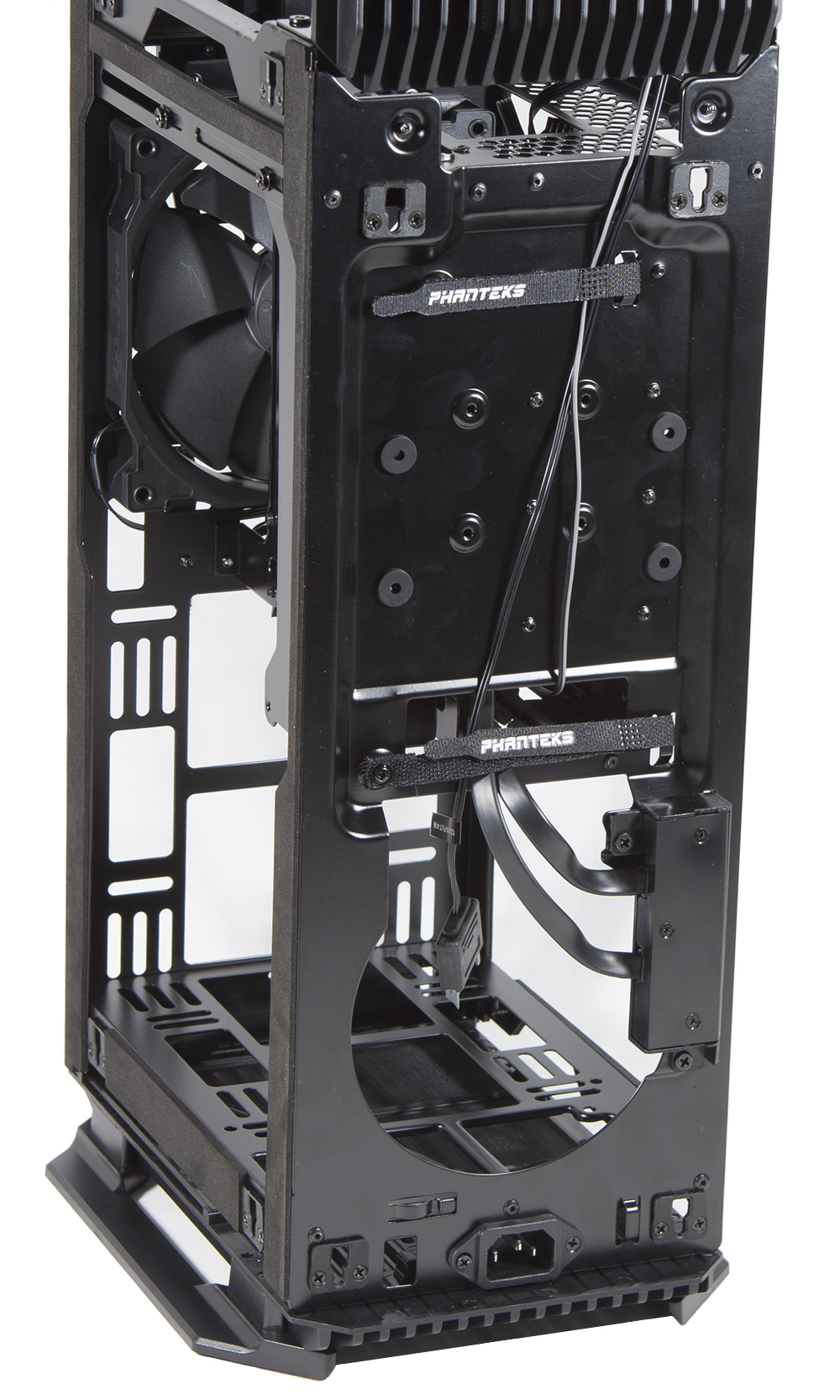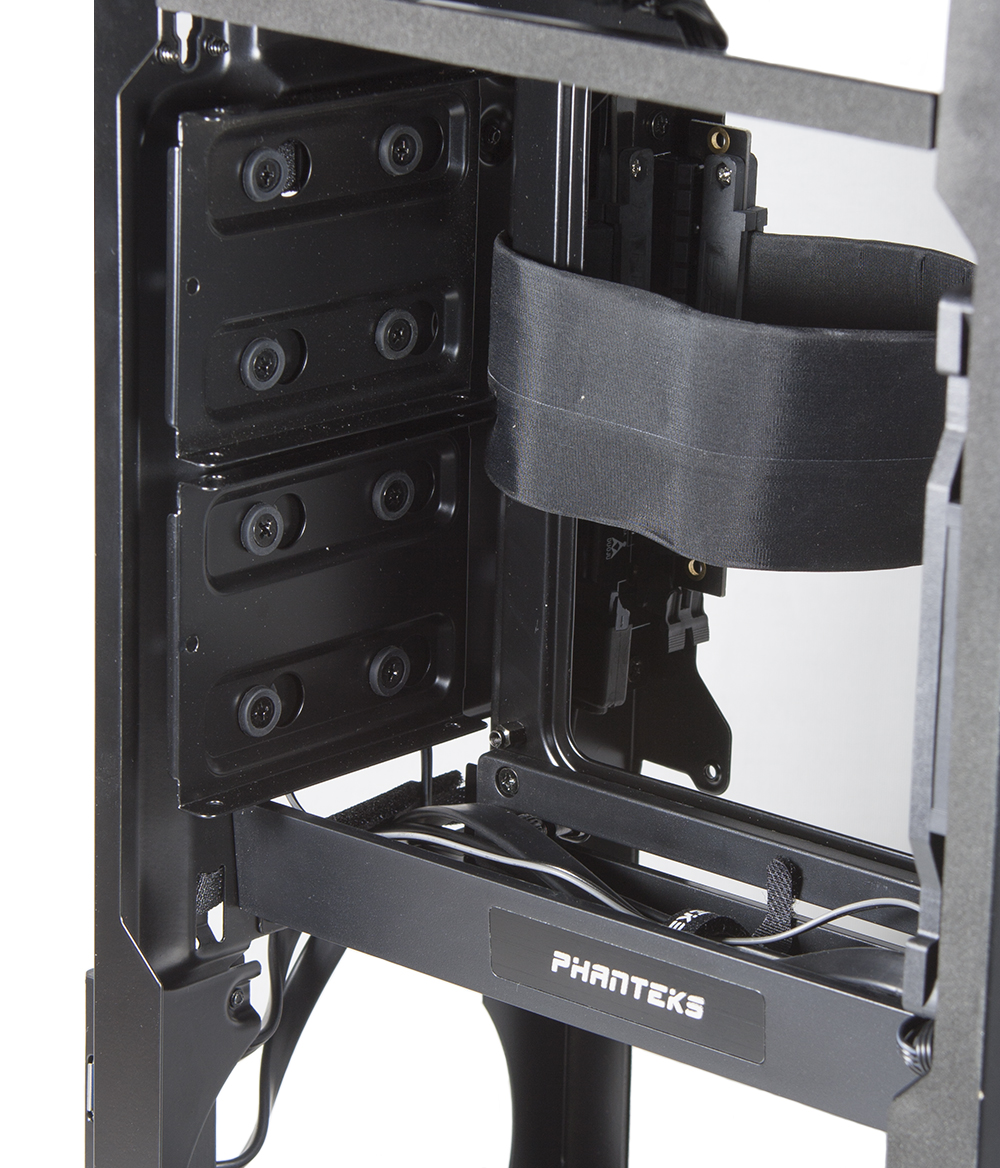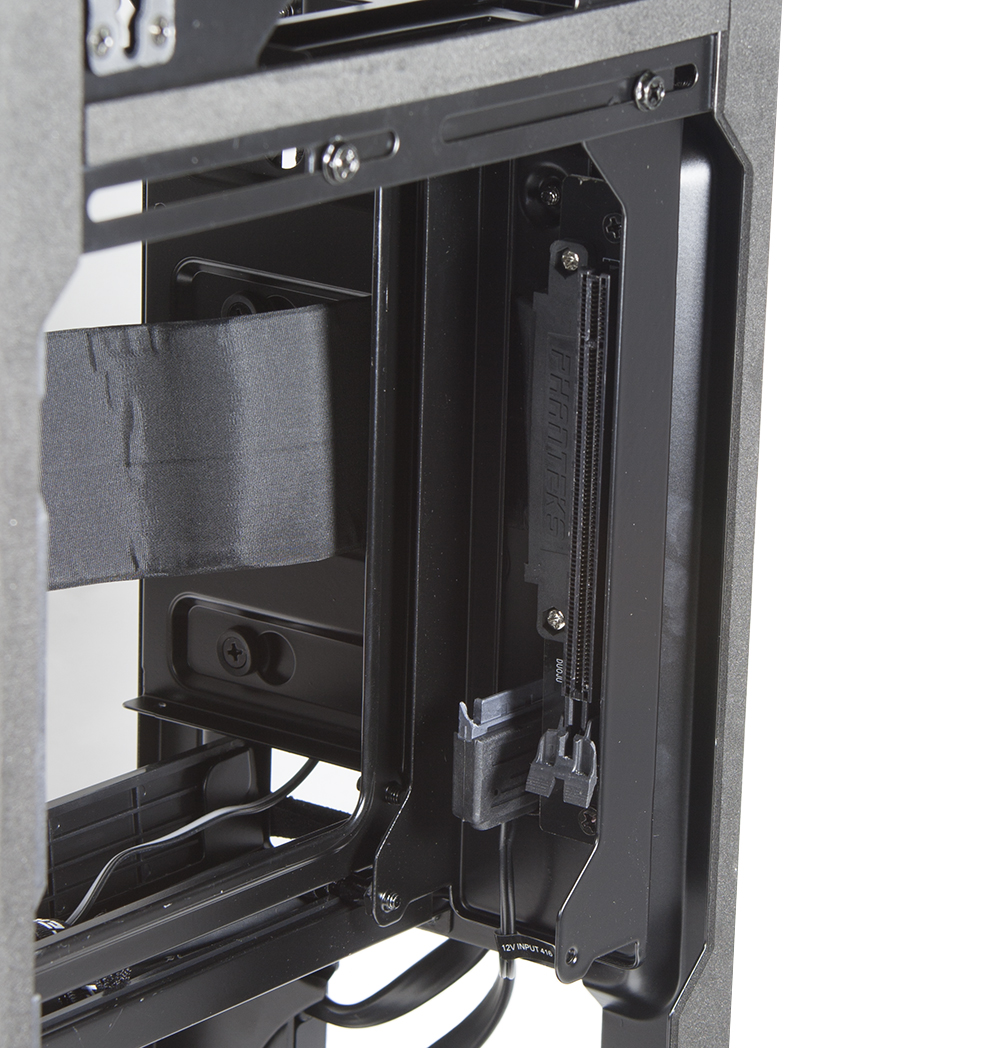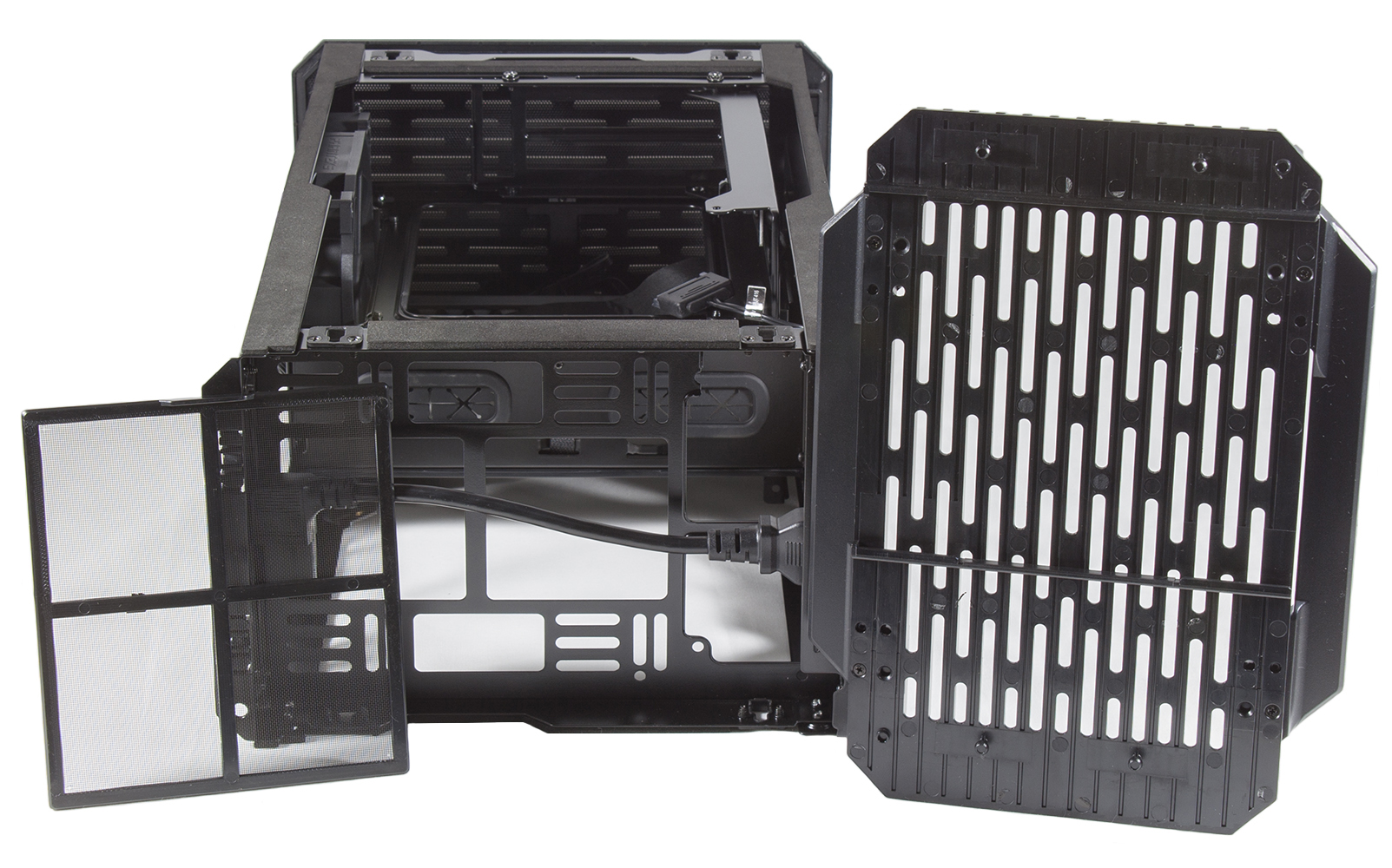Early Verdict
Though the Evolv Shift’s stock performance leaves a lot to be desired, its aluminum and tempered glass construction along with its tall-thin shape and $110 price tag earn it our seal of approval.
Pros
- +
Reasonable price for aluminum and tempered glass construction
- +
Large tempered glass panels to showcase your build
- +
Built-in RGB controller with options for expansion
- +
Usable in either a horizontal or vertical orientation
Cons
- -
Poor thermal performance
- -
Above average noise performance
- -
Only comes with one case fan preinstalled
Why you can trust Tom's Hardware
Features & Specifications
In my last review, I mentioned that we were taking a break from reviewing large and expensive cases in order to review samples that were smaller and more budget oriented. Well, it turns out that break may have been short lived, and while today’s sample most likely fails to meet most reader definitions of small, it at least features a price tag that won’t completely blow your budget. Standing tall at a grand 19.1” the Enthoo Evolv Shift is the smaller and more budget friendly of the two newest additions to Phanteks’ Enthoo Series of cases.
Specifications
* Height With Feet
** Third 2.5" Drive Bracket Sold Separate
Like its larger counterpart, the tall, slim design of the Evolv Shift is easily mistaken as a tower speaker or some sort of abstract looking room fan at first glance. Phanteks’ goal for the Evolv Shift cases was to design something with a premium look and feel that would look good anywhere in a home or office environment. We think the company achieved that goal, and as an added bonus, it did so while keeping the price of both cases well south of $200.
Both the Evolv Shift and the larger Evolv Shift X feature the same anodized aluminum and tempered glass exterior, attached to a powder coated steel frame. However, the $110 Evolv Shift drops the extra 7” of height as well as the extra water cooling and storage capacity found in the $160 Evolv Shift X.
In order to preserve the clean look of the front panel, Phanteks chose to hide the front I/O ports, placing them at the rear of the case on the left side. Furthermore, given the distance to the front of the case, as well as the fact that it’s possible to use the case in either a horizontal or vertical orientation, Phanteks chose to omit the front audio ports, leaving the Evolv Shift with only a pair of USB 3.0 ports.
Continuing with the theme of non-traditionally placed front I/O interfaces, Phanteks tucked the power button away on the top of the case along with a smaller unmarked button. According to the manual, this mystery button controls the case’s RGB lighting system. By default, the only RGB lighting found on the Shift and Shift X is their power button, seen above as the small white bar in the center of the image. The built-in controller gives users the option of expanding the lighting with up to five meters of LED strips as well as any of the Glacier Series waterblocks from Phanteks. Finally, the controller also comes with a standard 4-pin motherboard connector for added control by capable boards.
Get Tom's Hardware's best news and in-depth reviews, straight to your inbox.
With just a slight press the spring hinged top panel pops open to reveal the control box for the RGB lighting as well as a removable dust filter, and as you may have noticed, a hidden compartment.
This hidden compartment is home to what is traditionally the rear panel of most cases. Inside is a cutout for the rear I/O shield of a motherboard as well as an offset pair of expansion slots. We also find the captive thumbscrews that help secure the front, rear, and side panels to the case.
While there’s a sizable hole at the rear of this compartment for cables to pass through, we found that there may be an issue with the depth of the compartment with the top closed. During our testing, we found that the top cover was unable to close properly with a DVI cable connected to the graphics card due to the height of the connector. Users may run into issues if they have peripherals with large, inflexible connectors.
The rear panel is plain due to the relocation of most of the cutouts and slots to the compartment on top of the case. However, because the design of the case relocates the power supply mount like it relocates almost everything else, a plug remains at the bottom of the case for feeding power to the power supply’s new location.
The tempered glass side panels on the Shift and Shift X provide a very generous view inside of the case, and should help contain some of the noise generated by the case internals. Because the panels use the screws inside the top compartment to attach to the case, the thumbscrews on the outside of the panels are essentially decorative, unless you accidentally break a panel and need to move the mounts.
After removing the outer panels, we found ourselves with almost unrestricted access to the inside of the case for an almost effortless building experience. The front of the Shift features two 140mm or 120mm fan mounts and with a 140mm fan pre-installed in the top mount. Meanwhile, Phanteks leaves it to the user to fill the bottom mount with either a fan or a radiator. Finally, a pair of cutouts and permanently installed hook and loop cable ties provide cable management for the front panel.
The back of the case features more cable ties, an air intake cutout at the bottom for the power supply, and a mount up top for storage. By default, this mount accepts a 3.5” drive but may also be used with a 2.5” drive. However, in order to do so, users will either have to relocate one of the 2.5” drive sleds from inside the case or buy a third one from Phanteks.
There is another storage mount inside of the case, with two pre-installed sleds for 2.5” drives. Below the two drive sleds is a tray for managing cables, complete with a cable tie. The horizontal bar with Phanteks’ logo at the front of the tray also flips down giving users a bit more clearance when installing the motherboard.
Behind the motherboard tray sits a PCIe x16 riser and extension cable for mounting a graphics card. The default orientation of the riser faces the fan inward towards the motherboard. Even though this means the card now has to deal with a bit of warm air from the back of the board, it provides better airflow than the reverse orientation, which puts the cooling fan directly up against the side panel of the case. However, the bracket is reversible for users with liquid cooled cards who wish to have the waterblock visible through the side of the case.
The bottom panel of the case is removable, and underneath it resides a mount with dust filter for a 140mm or 120mm radiator or cooling fan, and a mount for an SFX form factor power supply. The wide feet on the bottom panel are removable, enabling the Shift to lay flat when placed horizontally.
MORE: Best Cases
MORE: All Case Content
-
JackNaylorPE Every Phanteks case before the Shift has been a "game changer" with great looks, outstanding cooling options, good looks and lower than expected pricing forcing the market that had be stagnant for years, to incorporate new and better ideas. This is a break from that run. It's the first case from Phanteks that I wasn't anxious to get my hand on.Reply -
madmurdock0311 I had planned on purchasing this case for my itx build, but, with no solid release date set, I went with the Fractal Design Node. After reading this review, I'm kind of glad I didn't wait. I'm not impressed with the thermal or noise results. Form over function here, I guess.Reply -
JackNaylorPE The Evolv ITX is great case, gorgeous, functional and feature loaded ... the Evolv Shift is just prettyReply
Evolv - https://www.newegg.com/Product/Product.aspx?Item=N82E16811854015 -
blackwolfecreativeconcepts Newegg is taking preorders and showing a ship date of the 26th of September.Reply
My only question is radiator support in the smaller Shift. Product specifications state it can hold 2 120mm rads/AIOs. But can it hold 1 240mm rad or AIO? -
motanel05 Two enclosures for the same type of motherboards. I wish such a casing for mATX motherboards. Maybe designers are thinking and from such a model.Reply -
tkline I’ve been waiting for this case for a while, I really love the clean look. Don’t care about heat, I’m not gonna overclock anything. But I can see why that might be an issue for some. I am planning to use this as a HTPC for gaming in the living room. I kinda wish they had a cheaper no-glass version.. I kinda feel like for me anyway, I don’t care about the insides since it’s going on my TV rack where you wouldn’t be able to see it anyway. I also want to lay it flat on it’s side, and I worry the right side / bottom side glass panel is just wasted even more than the other side. Overall though, I still like the look either way. Can’t wait to start my new build. I think I may wait another month or so though and see about getting a coffee lake CPU.Reply -
Crashman Reply
You're right, I really like the Evolv ITX :D20189280 said:The Evolv ITX is great case, gorgeous, functional and feature loaded ... the Evolv Shift is just pretty
Evolv - https://www.newegg.com/Product/Product.aspx?Item=N82E16811854015
-
thundervore Reply20189103 said:Every Phanteks case before the Shift has been a "game changer" with great looks, outstanding cooling options, good looks and lower than expected pricing forcing the market that had be stagnant for years, to incorporate new and better ideas. This is a break from that run. It's the first case from Phanteks that I wasn't anxious to get my hand on.
I agree with this!
Im waiting on a ITX version of the Phanteks Enthoo Evolv https://www.newegg.com/Product/Product.aspx?item=N82E16811854058 and hoping it will be the Evolv ITX just smaller to utilize SFX power supplies and new tempered glass doors ON HINGES with magnets (because 4 thumbscrews suck!).
The shift just doesn't do anything for me at all. -
Khimera2000 Intresting to see the case finally previewed on the site. Any chance of doing a review with an AIO because all the videos I have seen use an AIO for the build, even there Electronic Show official reveal had an AIO. I'd like to see how air would compare to the AIO setup I've seen used everywhere else.Reply
Without that it's just pointing out the obvious... A case built for closed loop coolers performs horrible with open air.
